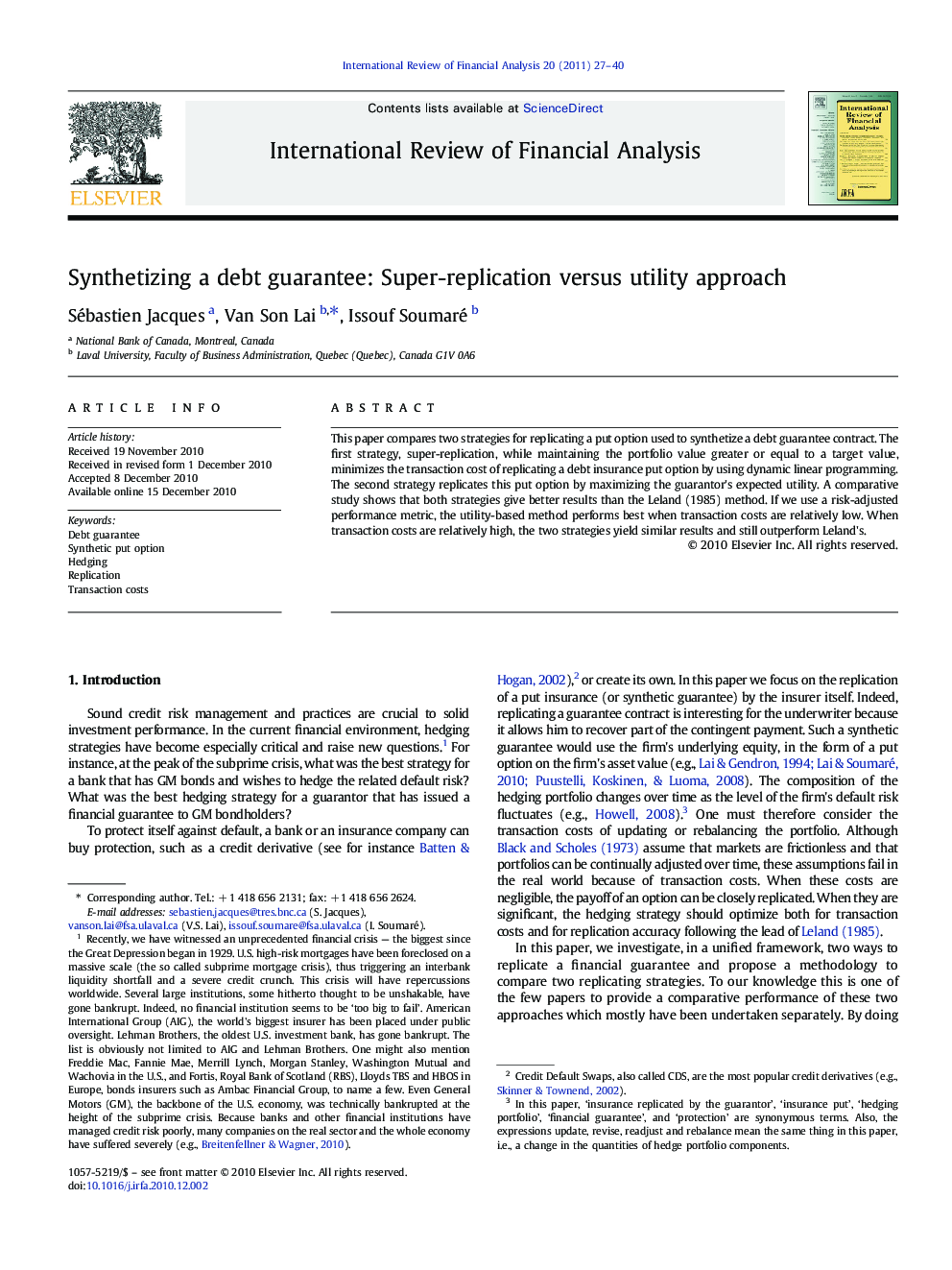| Article ID | Journal | Published Year | Pages | File Type |
|---|---|---|---|---|
| 5085162 | International Review of Financial Analysis | 2011 | 14 Pages |
Abstract
This paper compares two strategies for replicating a put option used to synthetize a debt guarantee contract. The first strategy, super-replication, while maintaining the portfolio value greater or equal to a target value, minimizes the transaction cost of replicating a debt insurance put option by using dynamic linear programming. The second strategy replicates this put option by maximizing the guarantor's expected utility. A comparative study shows that both strategies give better results than the Leland (1985) method. If we use a risk-adjusted performance metric, the utility-based method performs best when transaction costs are relatively low. When transaction costs are relatively high, the two strategies yield similar results and still outperform Leland's.
Keywords
Related Topics
Social Sciences and Humanities
Economics, Econometrics and Finance
Economics and Econometrics
Authors
Sébastien Jacques, Van Son Lai, Issouf Soumaré,
